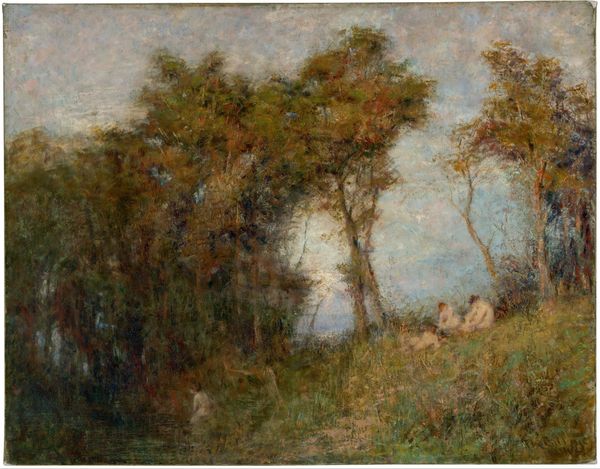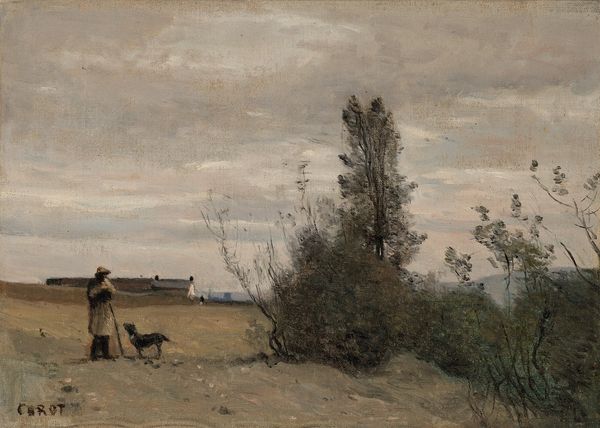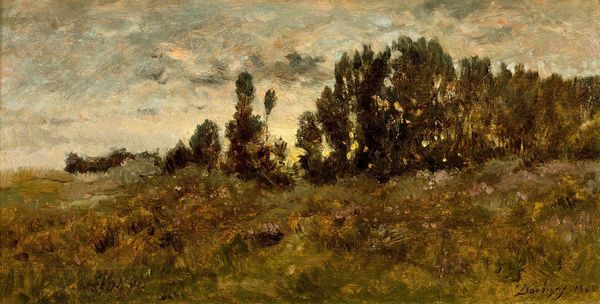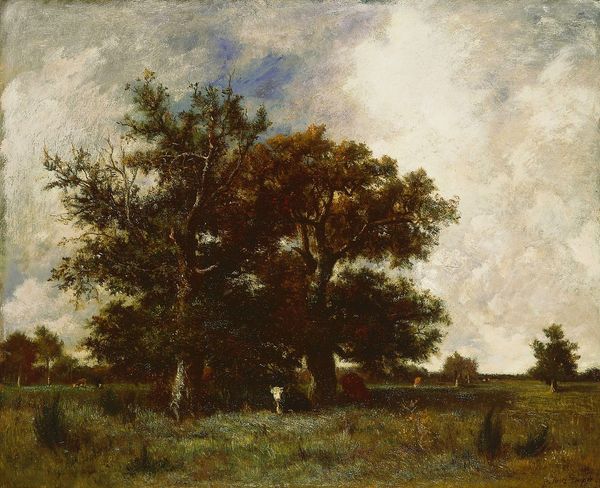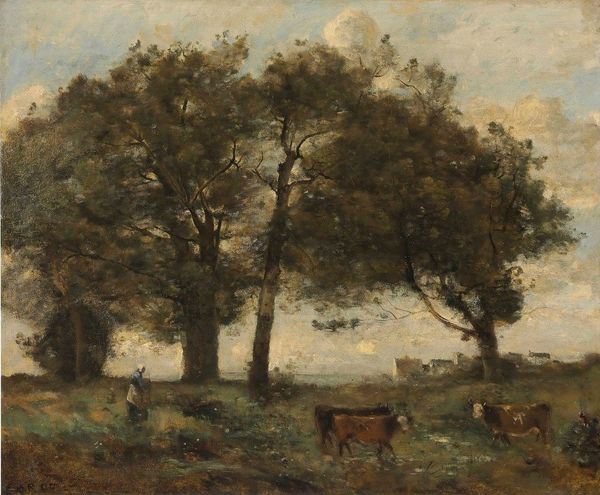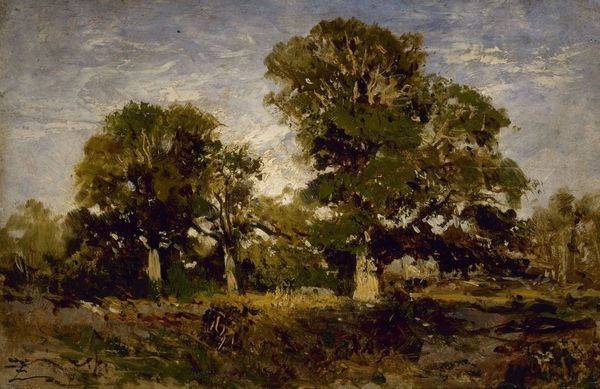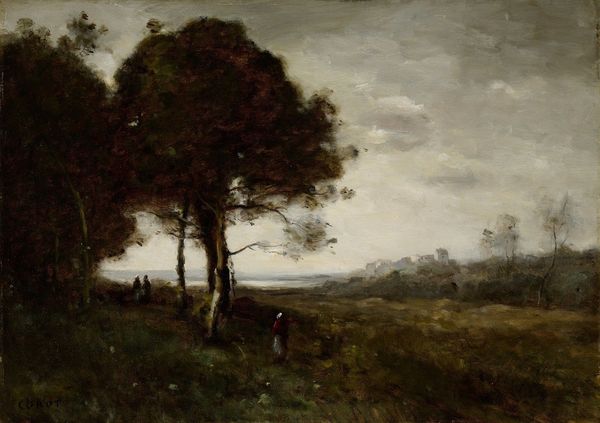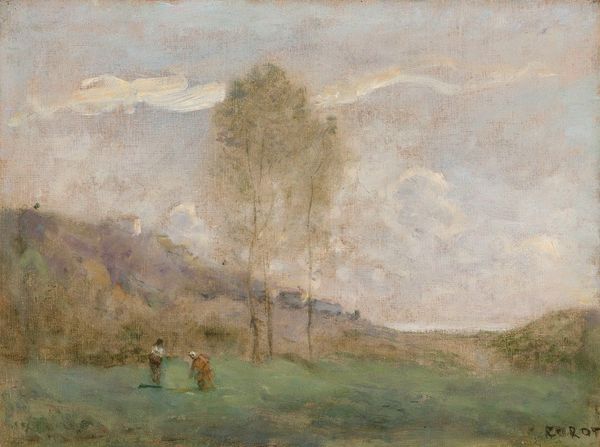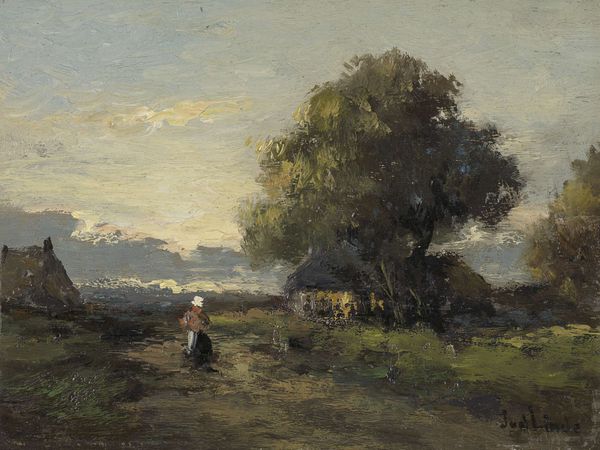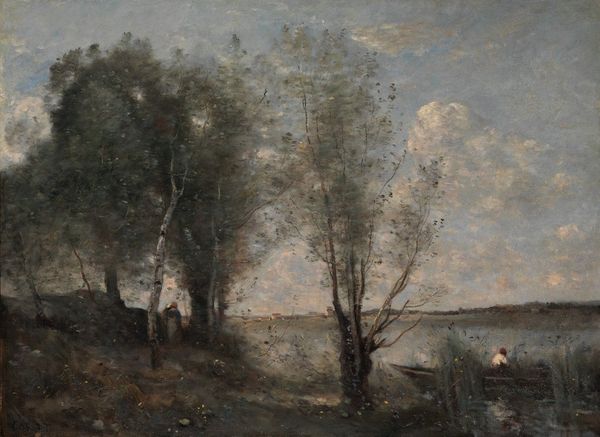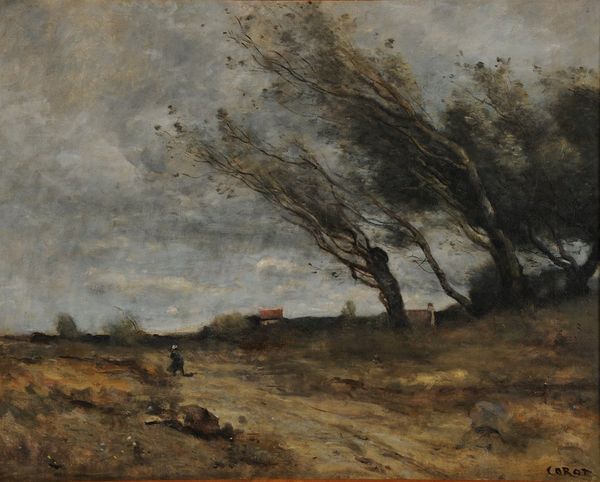
Copyright: Public Domain: Artvee
Curator: Félix Ziem’s “Environs de Barbizon,” likely painted between 1850 and 1860, offers a glimpse into the French countryside. Editor: There’s a hazy, almost dreamlike quality to it. I'm immediately drawn to the texture; you can practically feel the weight of the oil paint on the canvas, and the dampness in the air. Curator: Indeed. Ziem was part of that pivotal moment when artists were leaving their studios and embracing "en plein air" painting. Considering the social context, this movement championed direct engagement with nature. How was the experience of rural life represented, or perhaps romanticized? Editor: The materiality absolutely dictates that. Think of the portable tools they required. A small canvas like this, easily transportable. And observe how the brushstrokes build the scene so economically – the labor of applying paint is evident, but streamlined, almost functional. Curator: I agree. There’s a distinct power dynamic in how the lone figure is placed within this landscape, dwarfed by the trees. Is this about the relationship between humanity and the environment, the struggle for survival, or something else entirely? I consider issues of labor and social class inherent in Barbizon landscapes. Editor: The material speaks further. These earth tones, those heavy applications…they were available and cheap! How does economic access affect style, presentation? Is there, then, something inherent about these subjects born from material necessity rather than artistic choice? Curator: Ziem's background also needs consideration: his travels through Europe, especially Venice. Was he attempting to find an 'authentic' France? Was that even possible? I do appreciate your pointing out the raw availability and deployment of common materials to create fine art—a shift happening at this very moment. Editor: So, is Ziem engaging with these questions of class consciousness and landscape representation…or simply painting pretty scenery with readily available pigments and portability in mind? Does authorial intent even matter? Curator: I think he invites it, whether consciously or not! The landscape has always been political and social—even more so in light of this period. This image represents the shift in art creation that moved away from formal studios. Editor: Well, thinking about Ziem's labor, it does show a fascinating intersection of social access, environment and artistic pursuit. A simple landscape holds a rather material core!
Comments
No comments
Be the first to comment and join the conversation on the ultimate creative platform.

